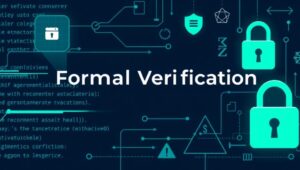Formal Verification: Building Provably Correct Software (2027 Goal)
In an increasingly digital world, the reliability of software is paramount. From controlling critical infrastructure to managing sensitive financial transactions, software errors can have catastrophic consequences. Formal verification offers a rigorous approach to ensuring software correctness, and by 2027, it’s poised to become a cornerstone of software development.
What is Formal Verification?
Formal verification is a technique used to mathematically prove that a software system meets its specified requirements. Unlike traditional testing methods that explore a subset of possible scenarios, formal verification exhaustively analyzes all possible states and behaviors of a program.
This involves creating a formal model of the software and its desired properties, then using mathematical techniques like theorem proving or model checking to demonstrate that the model satisfies those properties. If the model is accurate and the proof is successful, we can confidently say that the software will behave as intended.
Why is Formal Verification Important?
The benefits of formal verification are significant:
- Increased Reliability: By mathematically proving correctness, formal verification minimizes the risk of software bugs and vulnerabilities.
- Reduced Costs: Identifying and fixing errors early in the development cycle can save significant time and resources compared to debugging during testing or, worse, after deployment.
- Enhanced Security: Formal verification can help identify and eliminate security vulnerabilities that might be missed by traditional testing methods.
- Regulatory Compliance: In industries like aerospace, healthcare, and finance, formal verification can help meet stringent regulatory requirements for software safety and security.
How Does Formal Verification Work?
The formal verification process typically involves the following steps:
- Specification: Define the desired behavior of the software using a formal specification language.
- Modeling: Create a formal model of the software system, representing its structure and behavior.
- Verification: Use mathematical techniques like theorem proving or model checking to prove that the model satisfies the specification.
- Validation: Validate the model against the actual software to ensure it accurately represents the system.
Challenges and Solutions
Despite its benefits, formal verification faces several challenges:
- Complexity: Creating formal models and conducting proofs can be complex and time-consuming, requiring specialized expertise.
- Scalability: Applying formal verification to large, complex systems can be computationally challenging.
- Tooling: The availability of robust and user-friendly formal verification tools is still limited.
However, ongoing research and development efforts are addressing these challenges. Automated verification techniques, more expressive specification languages, and improved tool support are making formal verification more accessible and practical.
Formal Verification by 2027: A Realistic Goal
By 2027, several factors will contribute to the widespread adoption of formal verification:
- Advancements in AI: Artificial intelligence and machine learning can automate aspects of formal verification, such as model generation and proof construction.
- Increased Computing Power: Cloud computing and parallel processing provide the computational resources needed to tackle large-scale verification problems.
- Growing Demand for Reliable Software: As software becomes increasingly critical, the demand for formal verification will continue to grow.
- Integration into Development Workflows: Tools and methodologies will evolve to seamlessly integrate formal verification into existing software development workflows.
The Future of Software Development
Formal verification represents a paradigm shift in software development. Instead of relying solely on testing, developers can use mathematical proofs to guarantee the correctness of their code. As formal verification becomes more accessible and practical, it will play an increasingly important role in building reliable, secure, and trustworthy software systems.
By 2027, formal verification will not be just a niche technique but a standard practice in many industries. This will lead to a new era of software development where correctness is guaranteed, and the risk of software failures is minimized.




